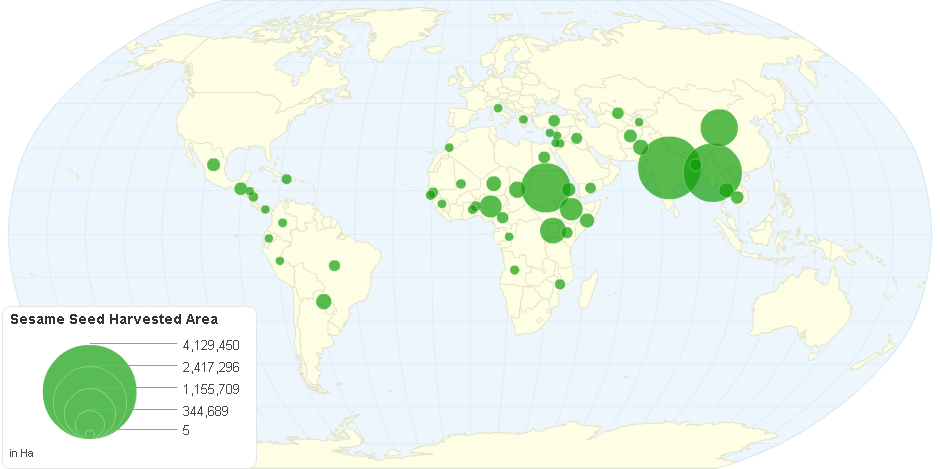This chart shows Sesame Seed Harvested Area by Country.
Sesame is a flowering plant in the genus Sesamum, also called benne.Numerous wild relatives occur in Africa and a smaller number in India. It is widely naturalized in tropical regions around the world and is cultivated for its edible seeds, which grow in pods or "buns". The world harvested 4.2 million metric tonnes of sesame seeds in 2013, with India and China as the largest producers.
Sesame seed is one of the oldest oilseed crops known, domesticated well over 3000 years ago. Sesame has many species, most being wild and native to sub-Saharan Africa. Sesame indicum, the cultivated type, originated in India and is tolerant to drought-like conditions, growing where other crops fail.
Sesame has one of the highest oil contents of any seed. With a rich, nutty flavor, it is a common ingredient in cuisines across the world. Like other nuts and foods, it can trigger allergic reactions in some people.Sometimes sold with its seed coat removed, this variety is often present on top of baked goods in many countries.
For a 100-gram serving, dried whole sesame seeds are rich in calories (573 kcal) and are composed of 5% water, 23% carbohydrates, 12% dietary fiber, 50% fat and 18% protein.The flour that remains after oil extraction from sesame seeds is 35-50% protein and contains carbohydrates. This flour, also called sesame meal, is a high-protein feed for poultry and livestock
9 years ago

